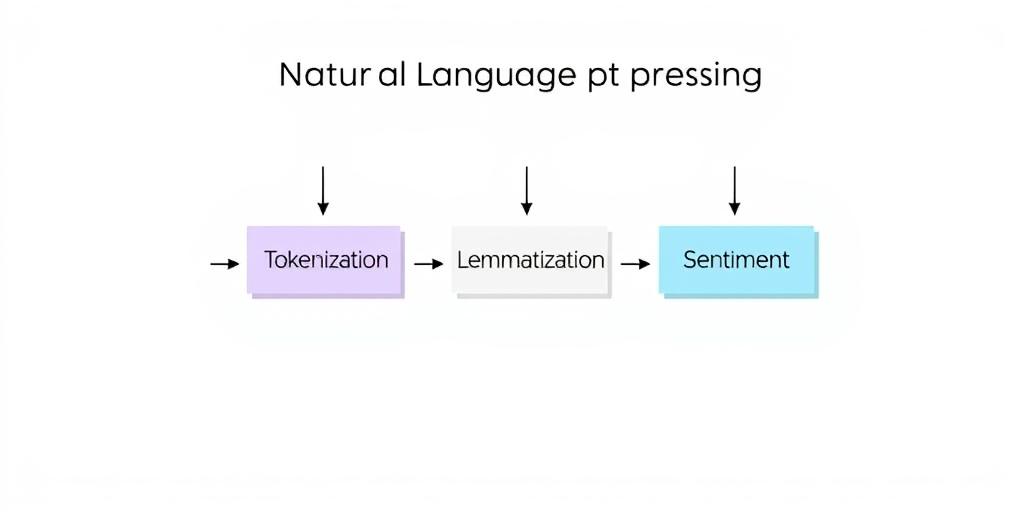Imagine a world where computers understand human language as effortlessly as we do. This is the promise of Natural Language Processing (NLP), a fascinating field of Artificial Intelligence (AI) that bridges the gap between human communication and machine comprehension.
Understanding Natural Language Processing (NLP)
What is NLP?
Natural Language Processing is a branch of computer science that enables computers to understand, interpret, and generate human language. It’s like teaching machines to “read” and “speak” our language, unlocking a world of possibilities for how we interact with technology.
The Importance of NLP in Today’s World
NLP is no longer a futuristic concept – it’s already transforming our daily lives. From the voice assistants on our smartphones to the personalized recommendations we receive online, NLP powers a wide range of technologies. Its impact is felt across industries, helping businesses automate tasks, improve customer experiences, and gain valuable insights from data.
Key Components of NLP
Tokenization
The first step in NLP is tokenization, where text is broken down into individual units called tokens. These tokens can be words, punctuation marks, or even individual characters, depending on the task. This process allows computers to analyze the text in a structured way.
Part-of-Speech Tagging
Once the text is tokenized, Part-of-Speech (POS) tagging assigns grammatical labels to each token, identifying them as nouns, verbs, adjectives, etc. This provides valuable context for understanding the meaning of the text.
Named Entity Recognition
Named Entity Recognition (NER) focuses on identifying and classifying named entities in text, such as people, organizations, or locations. This information is crucial for understanding the context of the text and extracting relevant information.
Sentiment Analysis
Sentiment analysis analyzes text to understand the emotions or opinions expressed within it. This can range from simple positive/negative classification to more nuanced analysis of emotions like joy, sadness, or anger.
Machine Translation
Machine translation uses NLP to automatically translate text from one language to another. This technology has revolutionized communication and made information accessible to a wider audience.
How NLP Works: A Step-by-Step Guide
Data Collection and Preprocessing
The journey begins with collecting a large dataset of text and preparing it for analysis. This involves cleaning the data, removing irrelevant information, and converting it into a format suitable for NLP algorithms.
Feature Extraction
Next, feature extraction identifies key features from the text that can be used to understand its meaning. This might include word frequency, sentence structure, or semantic relationships between words.
Model Training
Using the extracted features, an NLP model is trained on the dataset. This process involves feeding the model with data and adjusting its parameters to learn patterns and relationships in the language.
Evaluation and Optimization
Once trained, the model is evaluated on unseen data to assess its performance. This helps identify areas for improvement and optimize the model to achieve better results.
Applications of NLP
Chatbots and Virtual Assistants
NLP is the backbone of chatbots and virtual assistants, enabling them to understand user queries and provide relevant responses. From customer service applications to personal assistants, these technologies are changing how we interact with computers.
Text Summarization and Information Retrieval
NLP powers text summarization tools that condense large amounts of text into concise summaries. This is especially useful for research, news, and information retrieval tasks.
Machine Translation
As mentioned earlier, machine translation is a powerful application of NLP that allows us to break down language barriers. From translating websites to facilitating international communication, machine translation is changing how we access information and connect with others.
Sentiment Analysis in Social Media
NLP is widely used to analyze social media data, gauging public sentiment towards brands, products, or current events. This helps businesses understand customer feedback, monitor brand reputation, and make data-driven decisions.
Spam Detection and Email Filtering
NLP algorithms are used to identify and filter spam emails, protecting users from malicious content and enhancing email security.
The Future of NLP
Advancements in Deep Learning
Deep learning techniques are revolutionizing NLP, enabling models to learn more complex language patterns and achieve higher accuracy.
Integration with Other AI Technologies
NLP is increasingly integrated with other AI technologies, such as computer vision and robotics, to create more powerful and versatile applications.
Ethical Considerations in NLP
As NLP becomes more sophisticated, ethical considerations become increasingly important. Bias in training data, privacy concerns, and the potential for misuse of NLP technology are key areas of focus for the future.
The world of NLP is constantly evolving, with new advancements emerging regularly. As the field matures, we can expect to see even more innovative applications of NLP across various industries, transforming how we communicate, access information, and interact with technology.




